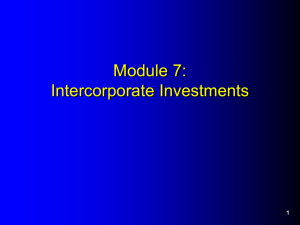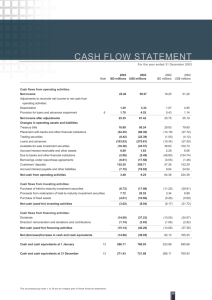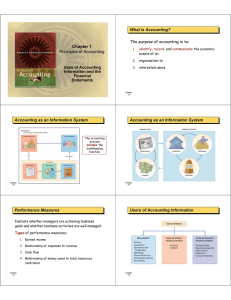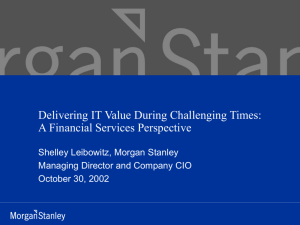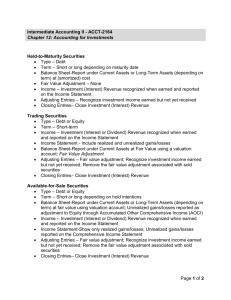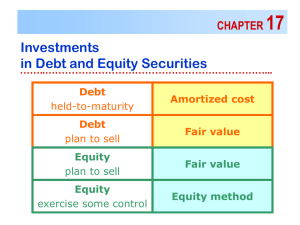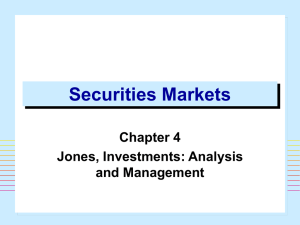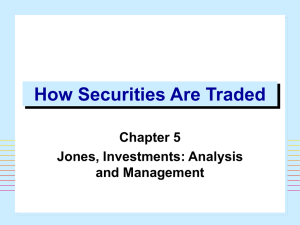FASB 115 Investment Accounting Overview
advertisement
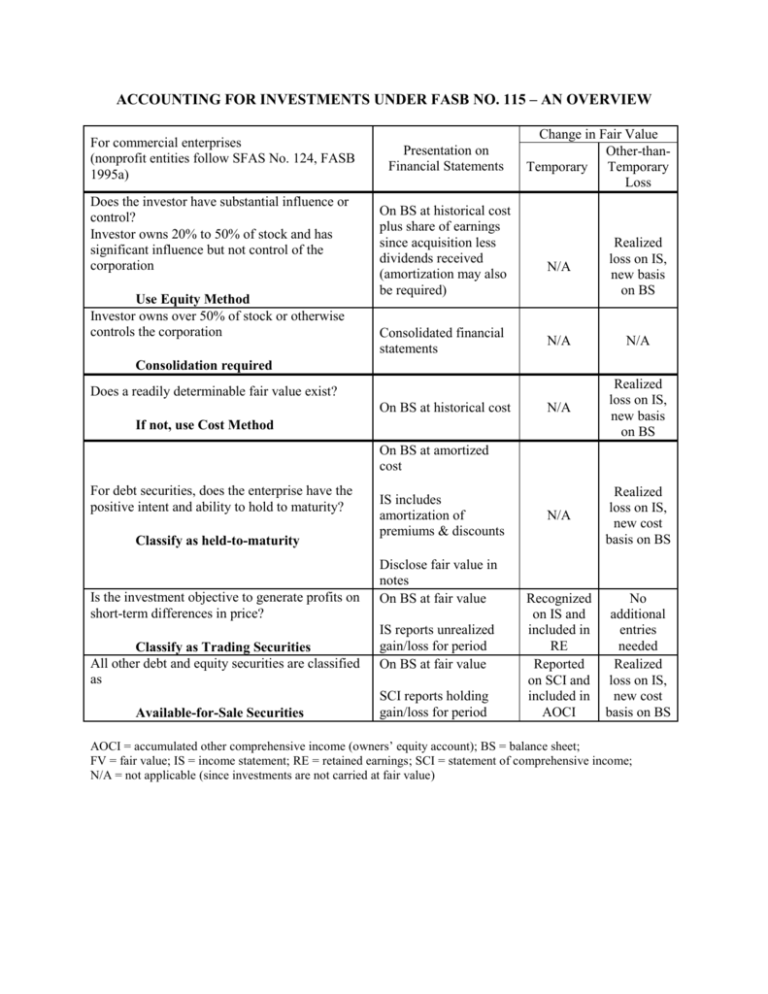
ACCOUNTING FOR INVESTMENTS UNDER FASB NO. 115 – AN OVERVIEW For commercial enterprises (nonprofit entities follow SFAS No. 124, FASB 1995a) Does the investor have substantial influence or control? Investor owns 20% to 50% of stock and has significant influence but not control of the corporation Use Equity Method Investor owns over 50% of stock or otherwise controls the corporation Presentation on Financial Statements On BS at historical cost plus share of earnings since acquisition less dividends received (amortization may also be required) Consolidated financial statements Change in Fair Value Other-thanTemporary Temporary Loss N/A Realized loss on IS, new basis on BS N/A N/A N/A Realized loss on IS, new basis on BS N/A Realized loss on IS, new cost basis on BS Recognized on IS and included in RE Reported on SCI and included in AOCI No additional entries needed Realized loss on IS, new cost basis on BS Consolidation required Does a readily determinable fair value exist? On BS at historical cost If not, use Cost Method On BS at amortized cost For debt securities, does the enterprise have the positive intent and ability to hold to maturity? Classify as held-to-maturity Is the investment objective to generate profits on short-term differences in price? Classify as Trading Securities All other debt and equity securities are classified as Available-for-Sale Securities IS includes amortization of premiums & discounts Disclose fair value in notes On BS at fair value IS reports unrealized gain/loss for period On BS at fair value SCI reports holding gain/loss for period AOCI = accumulated other comprehensive income (owners’ equity account); BS = balance sheet; FV = fair value; IS = income statement; RE = retained earnings; SCI = statement of comprehensive income; N/A = not applicable (since investments are not carried at fair value)

